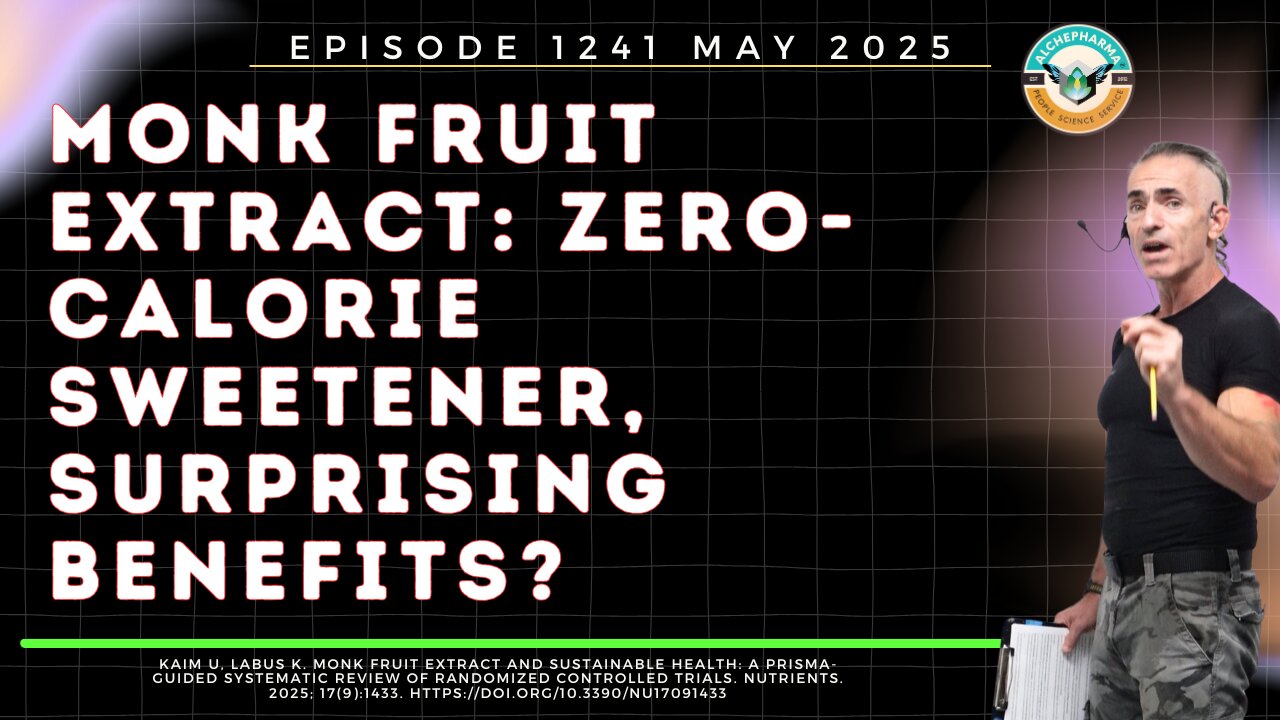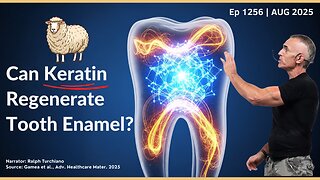Premium Only Content

Monk Fruit Extract: Zero-Calorie Sweetener, Surprising Benefits? Ep. 1241 MAY 2025
A recent PRISMA-guided systematic review published in Nutrients synthesized findings from randomized controlled trials (RCTs) to assess the impact of monk fruit extract (MFE) on metabolic health, lipid profiles, inflammation, and regulatory considerations. The review included a number of RCTs (note: while some search results indicated 10, others mentioned 5 included studies; refer to the final published article for the definitive number). The findings indicate that MFE may help reduce postprandial glucose levels (by 10–18% in included studies) and insulin responses (by 12–22%). Some studies also reported reductions in inflammatory markers such as IL-6 and TNF-α. No severe adverse effects were observed in the reviewed trials. The review also notes that MFE is approved for use in the United States and China, with its status under review in the European Union. The authors suggest MFE shows potential as a functional food ingredient for metabolic health, though they highlight the need for long-term clinical trials and a harmonized regulatory framework to confirm its long-term safety and efficacy within sustainable health strategies.
Disclaimers:
"This information is for educational purposes only and should not be interpreted as medical advice."
"This video discusses a systematic review of randomized controlled trials. While this represents a high level of evidence, individual results may vary, and further research is always ongoing."
"Always consult with a qualified healthcare professional before making any changes to your diet, supplement regimen, or treatment plan, especially if you have a medical condition or are taking medications."
"This channel does not provide medical advice."
#MonkFruitExtract #MetabolicHealth #SystematicReview #RandomizedControlledTrials #SustainableHealth
Kaim U, Labus K. Monk Fruit Extract and Sustainable Health: A PRISMA-Guided Systematic Review of Randomized Controlled Trials. Nutrients. 2025; 17(9):1433.
-
 7:11
7:11
Nutrition Company
1 month agoCan Keratin Regenerate Tooth Enamel? Ep 1256 AUG 2025
602 -
 DVR
DVR
StevieTLIVE
3 hours agoWarzone Wins ALL Night w/ GloryJean
16.6K1 -
 3:22:50
3:22:50
Laura Loomer
7 hours agoEP146: Loomer EXPOSES Big Tech's Complicity With Anti-ICE Violence
38.2K13 -
 31:39
31:39
Standpoint with Gabe Groisman
1 day ago“Most People Have NO IDEA What Isolationism could do to America” Rep Rich McCormick Joins Standpoint
15.6K4 -
 2:34:31
2:34:31
MissesMaam
6 hours ago75% DONE WITH PERFECTION!!! | Stardew Co-Op 💚✨
14.9K3 -
 LIVE
LIVE
Clenzd Gaming
4 hours ago $0.42 earnedThe Return
95 watching -
 1:20:44
1:20:44
DeafWarriorLegendary
3 hours ago🔥Deaf Streamer🔥
7.99K -
 2:04:52
2:04:52
TimcastIRL
6 hours agoBomb Threat At TPUSA, Bomb Squad Deployed For Controlled Detonation | Timcast IRL
200K210 -
 2:20:49
2:20:49
Barry Cunningham
5 hours agoBREAKING NEWS: DEMOCRATS SHUT DOWN THE GOVERNMENT! THEY HAVE UNLEASHED PRESIDENT TRUMP
48.8K22 -
 3:59:47
3:59:47
Nikko Ortiz
8 hours agoPTSD Is Fun Sometimes | Rumble LIVE
72.2K3